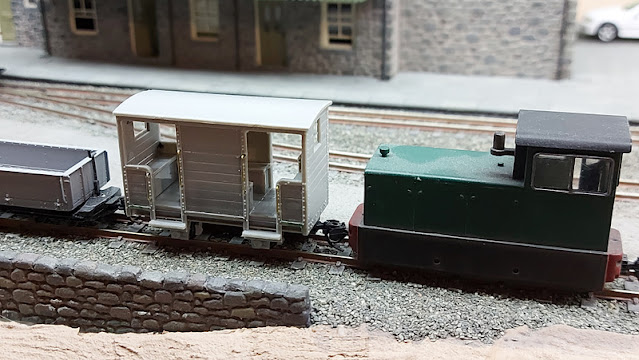As I am trying to clear a few unfinished projects from the workbench I thought I should finish this Welsh Highland coach, which I'd assembled way back in August 2019. It had actually visited the paint shop soon after, but the job of cutting and fitting the glazing looked tedious, the clear plastic was included in the kit but needed to be cut to fit the recess for each window. It was last summer before I made a start, but it was indeed tedious, progress was slow and the project stalled again until I decided it really deserved to be finished.
Using my callipers to measure the size and to score onto the clear plastic helped but each pane had to be checked and trimmed several times before it fitted. The recesses allowed just a fraction of a millimetre around each window so poor cutting would result in gaps, or the glazing not fitting flush and flat behind the openings. Each piece was then glued around the edges with Micro Krystal Klear (though my pot is drying up which didn't help) and placed in with tweezers. There are different sizes of windows, and those at the ends have virtually no frame at all, making cutting and fitting difficult. While excess glue is clear and can be removed, the glazing seems to mark easily and unfortunately has gained many visible scuffs and scratches, but at least the job is finally done!
Finally the roof was fixed with the same glue, which can be prised apart if needed - such as when I get around to fit passengers! At least the glazing doesn't look too bad at normal distances. Although I'd applied subtle weathering when I painted the coach, it doesn't seem to show in these mobile phone photos, though it does look effective to the naked eye.












